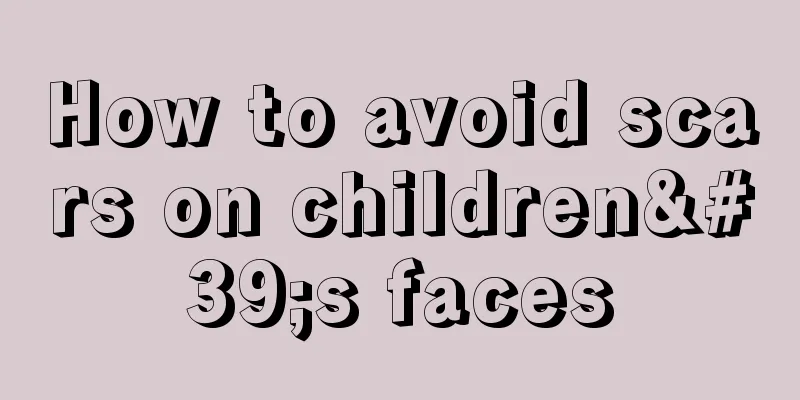What to do if children have blisters on the soles of their feet

|
When babies are young, they are often infected with various diseases due to their poor physical fitness, especially highly contagious diseases. For babies' weak bodies, they really have no resistance at all. Sometimes babies don’t want to walk. At this time, careful parents will find that the baby has blisters on the soles of the feet. The baby doesn’t want to walk because of the pain. So what should you do if a child has blisters on the soles of his feet? The most common cause of this rash in babies is herpes simplex virus infection. If it is accompanied by fever and oral herpes, you need to consider the possibility of hand, foot and mouth disease. 1. The treatment method is to let the baby use acyclovir ointment for treatment. 2. If you have hand, foot and mouth disease, you need to go to the hospital for diagnosis in time Fungal infection has always been a major problem that has plagued doctors and patients. Once a person is "targeted" by fungi, the disease often becomes lingering and difficult to cure. The parts that fungi invade include hair, skin, nails, dermis, subcutaneous tissue, and internal organs, which can be said to be everywhere. Among them, tinea pedis, also known as "athlete's foot", is a typical representative of superficial fungal infection. In the treatment of superficial fungal infections, it is usually "topical application first, then oral administration". In other words, after you become ill, you can first choose external medications such as Daktarin, Mektokine, and Lamisil ointment. If the medication is ineffective after applying it for a long time, then consider taking oral medications. Among oral medications, terbinafine (trade name: Lamisil) is a broad-spectrum antifungal drug that is widely used in clinical practice. It is used to treat various skin fungal infections such as tinea corporis, tinea cruris, tinea manuum, pedis, tinea capitis, and onychomycosis. It has a bactericidal effect on many fungi. Among skin tinea diseases, onychomycosis, commonly known as "onychomycosis", is the most stubborn and difficult to treat. External medications alone are often ineffective, so it is the main indication for oral antifungal drugs. For patients with onychomycosis, the course of oral terbinafine treatment is generally about 8 weeks; for patients with toenail onychomycosis, it is about 12 weeks. However, terbinafine cannot cure all onychomycosis. For different situations, further selection from a variety of drugs is required under the guidance of a doctor. The adverse reactions of terbinafine are mostly gastrointestinal symptoms such as bloating, decreased appetite, and nausea. In order to reduce its irritation symptoms to the digestive tract, it is recommended to take it after meals. However, damage to liver and kidney function is not common. However, if friends with a history of liver and kidney diseases want to take terbinafine orally, they should have their liver and kidney function checked regularly before and after treatment. |
<<: What to do if the child cannot digest the food
>>: What should I do if my child has intestinal gas?
Recommend
How many times a day is normal for a newborn baby to poop?
Newborns begin to slowly adapt to the external en...
How much milk does a 2-year-old baby need in a day
As the baby continues to grow, the amount of milk...
What are the symptoms of urinary tract infection in little boys?
Urinary tract infections often occur in adults be...
Why does the child snore?
Many people think that children do not snore norm...
What foods are most beneficial to the brain for primary school students?
Primary school students are in a critical period ...
What are the symptoms of zinc deficiency in a two-year-old baby?
In life, most children suffer from anorexia, so t...
Symptoms of pituitary tumors in children
Pituitary tumor is a relatively serious disease. ...
What to do if your baby has a blood infection?
Premature babies are more likely to suffer from b...
Treatments for renal failure in children
Kidney failure is a very terrible disease that po...
How many times a day is normal for babies under one month old?
When seeing a baby who is less than a month old, ...
What to do if an infant has biliary atresia?
What should we do if an infant has biliary atresi...
What complementary food is better for babies with diarrhea?
Nowadays, people always have some health problems...
What should I do if my child has difficulty breathing?
Sufficient sleep is very important for children&#...
Can children eat coltsfoot flowers?
Coltsfoot is actually a herb. If you soak it in w...
Treatment of tonsillitis and fever in babies
Tonsillitis and fever in babies have caused throa...









